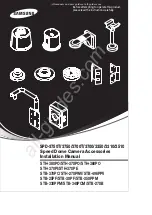
Technical Manual
Airbridge BTS3606A CDMA Base Station
System Description
Chapter 1 Introduction
1-4
l
Mobility management
l
Power control
l
Radio resource management
l
Provision of stable and reliable radio connections for the upper-level services
through soft/hard handoff
The PCF manages the Radio-Packet (R-P) connection. As radio resources are limited,
they should be released when subscribers are not sending or receiving any information.
But the Peer-Peer Protocol (PPP) connection must be maintained. The PCF shields the
radio mobility from the upper-level services through the handoff function.
III. MS/AT
l
MS
MS is the equipment used by the mobile subscriber. It can originate and receive
calls, and communicate with the BSS.
l
AT
AT is a device with a radio modem and a data interface that allows the user to
access a packet data network through the 1xEV-DO Access Network.
An AT is analogous to a mobile station in an CDMA2000 1x system. It may be
connected to a computing device like a laptop computer or may be a
self-contained data device like a Personal Digital Assistant (PDA).
1.2.2 Brief Introduction to CN
The CN comprises the packet domain network and the circuit domain network.
I. Packet domain network equipment
The packet domain network equipment covers
l
Packet Data Service Node (PDSN)
l
Mobile Internet Protocol Home Agent (MIP HA)
l
Authorization, Authentication and Accounting (AAA)
They connect to and communicate with the Internet.
II. Circuit domain network equipment
The circuit domain network equipment includes
l
Mobile Switching Center (MSC)
l
Home Location Register (HLR)
l
Gateway Mobile-services Switching Center (GMSC).
They connect to and communicate with the conventional Public Land Mobile Network
(PLMN) and Public Switched Telephone Network/Integrated Services Digital Network
(PSTN/ISDN).














































